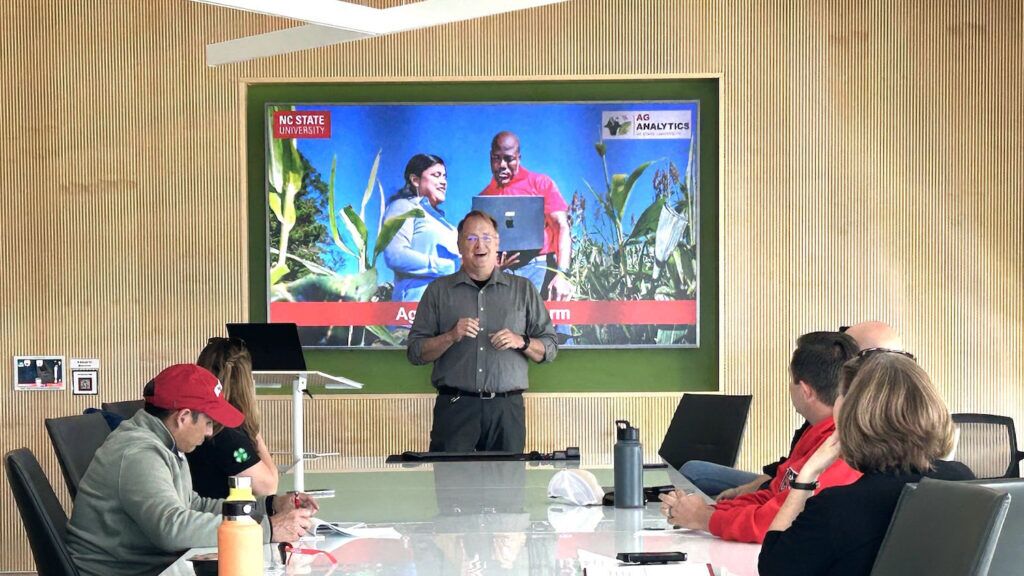Opinion | Funding cuts hit sustainable agriculture partnership with U of M – Star Tribune

Report on the Discontinuation of the Minnesota Institute for Sustainable Agriculture (MISA)
Executive Summary
This report details the impending discontinuation of funding for the Minnesota Institute for Sustainable Agriculture (MISA) by the University of Minnesota’s College of Food, Agriculture and Natural Resource Sciences. The decision, attributed to budget reductions, poses a significant threat to the state’s progress on multiple United Nations Sustainable Development Goals (SDGs). For over 30 years, MISA has served as a critical partnership, advancing sustainable food systems and agricultural resilience, directly aligning with the global 2030 Agenda for Sustainable Development.
Impact on Sustainable Development Goals (SDGs)
The termination of MISA directly undermines Minnesota’s commitment to several key SDGs by dismantling a proven collaborative model that fosters innovation in sustainable agriculture. The decision jeopardizes initiatives crucial for achieving food security, quality education, economic growth, and environmental protection.
- SDG 2: Zero Hunger
- MISA’s work strengthens the long-term resiliency of food systems.
- Initiatives support local food safety and assist farmers in transitioning to more sustainable and productive practices, such as the Transition to Organic Partnership Program.
- The Institute addresses systemic issues like meat-processing bottlenecks, which are critical for a stable food supply chain.
- SDG 4: Quality Education
- MISA was instrumental in generating the sustainable agriculture minor and the student organic farm, providing essential learning opportunities.
- The Institute attracts and retains students, contributing to the university’s role in providing inclusive and equitable quality education in sustainable development.
- It provides graduate students with support for independent learning and research.
- SDG 8: Decent Work and Economic Growth
- MISA’s programs directly support the economic viability of Minnesota farmers by assisting small grain producers and strengthening farmers market hubs.
- By promoting innovative technologies and regenerative agriculture, MISA fosters sustainable economic growth in rural communities.
- SDG 10: Reduced Inequalities
- The Next Gen Ag and Conservation Professionals Program actively mentors students of color, promoting diversity and inclusion in the agricultural sector and contributing to the reduction of inequalities.
- SDG 12: Responsible Consumption and Production
- The core mission of MISA is to advance sustainable production patterns.
- Programs like the Forever Green Initiative promote agricultural systems that are environmentally sound and economically viable.
- SDG 17: Partnerships for the Goals
- MISA exemplifies SDG 17 as a unique and successful joint venture between a public university and community organizations.
- Discontinuing this nationally recognized partnership abandons a collaborative model essential for developing practical solutions and achieving the SDGs.
Conclusion
The decision to defund the Minnesota Institute for Sustainable Agriculture represents a substantial setback for sustainable development in the region. It threatens progress on goals related to food security, education, economic opportunity, and environmental stewardship. The termination of this vital partnership occurs at a time when Minnesota’s leadership in sustainable agriculture is being celebrated nationally with the hosting of the Farm Aid 40 conference. The loss of MISA will create a significant void in the collaborative effort to build a resilient and sustainable food and agriculture system aligned with global development objectives.
SDGs Addressed in the Article
Analysis of Sustainable Development Goals (SDGs)
-
SDG 2: Zero Hunger
The article’s central theme is sustainable agriculture, which is fundamental to SDG 2. It discusses the Minnesota Institute for Sustainable Agriculture (MISA) and its work in “strengthening the long-term resiliency of our farming and food systems.” Initiatives mentioned, such as supporting “livestock producers,” assisting “small grain farmers,” and advancing the “Transition to Organic Partnership Program,” directly contribute to achieving food security and promoting sustainable agricultural practices.
-
SDG 4: Quality Education
MISA’s role in education is a key focus. The article highlights that MISA “helps the university attract and retain students” by generating a “sustainable agriculture minor and the student organic farm.” This demonstrates a direct link to providing quality education and promoting lifelong learning opportunities in the field of sustainability. The institute acts as a “bridge between the university and the larger community,” fostering education for sustainable development.
-
SDG 8: Decent Work and Economic Growth
By supporting Minnesota’s farmers and food producers, MISA’s work contributes to local economic growth. The article mentions initiatives aimed at solving practical problems like the “meat-processing bottleneck” and strengthening “farmers market hubs,” which help improve the economic viability of local agricultural enterprises and support rural communities.
-
SDG 10: Reduced Inequalities
The article explicitly mentions MISA’s role in promoting inclusivity through its “Next Gen Ag and Conservation Professionals Program,” which focuses on “mentoring students of color.” This initiative directly addresses the goal of reducing inequalities by empowering and promoting the inclusion of underrepresented groups in the agricultural sector.
-
SDG 12: Responsible Consumption and Production
The focus on “sustainable agriculture,” “regenerative agriculture,” and the “Transition to Organic Partnership Program” aligns with the goal of ensuring sustainable consumption and production patterns. These practices aim to produce food in a way that minimizes environmental impact and ensures the long-term health of natural resources.
-
SDG 17: Partnerships for the Goals
The very structure of MISA exemplifies this goal. The article describes it as a “unique joint venture between community organizations and university partners” and a “collaborative model that has fostered creative, practical solutions.” This multi-stakeholder partnership, which has existed for over 30 years, is crucial for achieving sustainable development objectives.
Specific SDG Targets Identified
Analysis of SDG Targets
-
SDG 2: Zero Hunger
- Target 2.3: By 2030, double the agricultural productivity and incomes of small-scale food producers. The article connects to this target through MISA’s work to “assist small grain farmers” and strengthen “farmers market hubs,” both of which directly support small-scale producers.
- Target 2.4: By 2030, ensure sustainable food production systems and implement resilient agricultural practices. This is central to MISA’s mission. The article highlights its focus on the “long-term resiliency of our farming and food systems” and programs like the “Forever Green Initiative” and the “Transition to Organic Partnership Program.”
-
SDG 4: Quality Education
- Target 4.4: By 2030, substantially increase the number of youth and adults who have relevant skills, including technical and vocational skills, for employment. MISA contributes by providing practical education through the “student organic farm” and developing “train-the-trainer aids for professionals about grazing using virtual fence and other technologies.”
- Target 4.7: By 2030, ensure that all learners acquire the knowledge and skills needed to promote sustainable development. MISA’s creation of the “sustainable agriculture minor” is a direct implementation of this target, educating students specifically on sustainable development principles within agriculture.
-
SDG 10: Reduced Inequalities
- Target 10.2: By 2030, empower and promote the social, economic and political inclusion of all, irrespective of race, colour, ethnicity, etc. The article points to the “Next Gen Ag and Conservation Professionals Program” that involves “mentoring students of color,” which is a clear action toward achieving this target.
-
SDG 17: Partnerships for the Goals
- Target 17.17: Encourage and promote effective public, public-private and civil society partnerships. MISA is described as a “nationally recognized partnership” and a “joint venture between community organizations and university partners,” making it a model for this target.
Indicators for Measuring Progress
Analysis of SDG Indicators
While the article does not cite official SDG indicators, it implies several metrics that could be used to measure progress toward the identified targets:
-
For SDG 2 (Zero Hunger):
- Number of farmers adopting sustainable practices: Implied by the mention of the “Transition to Organic Partnership Program” and support for “regenerative agriculture.”
- Number of small-scale farmers assisted: Directly referenced in the work with “small grain farmers.”
- Number and strength of local food systems: Implied by the initiative to “strengthen farmers market hubs.”
-
For SDG 4 (Quality Education):
- Student enrollment numbers: The article states that MISA “helps the university attract and retain students” and that its programs “draw undergraduates.” The number of students in the “sustainable agriculture minor” or participating in the “student organic farm” would be a direct indicator.
- Number of professionals trained: Implied by the development of “train-the-trainer aids for professionals.”
-
For SDG 10 (Reduced Inequalities):
- Number of participants from underrepresented groups: The number of “students of color” participating in the “Next Gen Ag and Conservation Professionals Program” serves as a direct indicator of progress toward inclusion.
-
For SDG 17 (Partnerships for the Goals):
- Longevity and stability of the partnership: The article notes MISA has focused on its mission for “more than 30 years,” indicating a successful, long-term partnership. Its potential termination is a negative indicator for this goal.
- Number of active partners: Implied by the description of MISA as a “joint venture between community organizations and university partners.”
Summary Table of SDGs, Targets, and Indicators
| SDGs | Targets | Indicators (Implied from the Article) |
|---|---|---|
| SDG 2: Zero Hunger | 2.3: Increase productivity/income of small-scale producers. 2.4: Ensure sustainable and resilient food production systems. |
– Number of small grain farmers assisted. – Number of farms in the Transition to Organic Program. – Number of strengthened farmers market hubs. |
| SDG 4: Quality Education | 4.4: Increase the number of people with relevant skills. 4.7: Ensure all learners acquire knowledge for sustainable development. |
– Number of students enrolled in the sustainable agriculture minor. – Number of students participating in the student organic farm. – Number of professionals trained via train-the-trainer aids. |
| SDG 8: Decent Work and Economic Growth | 8.2: Achieve higher levels of economic productivity through innovation. | – Adoption rate of new technologies like virtual fencing. – Economic impact of resolving meat-processing bottlenecks. |
| SDG 10: Reduced Inequalities | 10.2: Empower and promote the inclusion of all. | – Number of students of color mentored through the Next Gen Ag Program. |
| SDG 12: Responsible Consumption and Production | 12.2: Achieve sustainable management of natural resources. | – Acreage under regenerative agriculture or Forever Green initiatives. |
| SDG 17: Partnerships for the Goals | 17.17: Encourage effective public, public-private and civil society partnerships. | – The existence and 30-year longevity of the MISA partnership. – Number of community and university partners involved. |
Source: startribune.com

What is Your Reaction?
 Like
0
Like
0
 Dislike
0
Dislike
0
 Love
0
Love
0
 Funny
0
Funny
0
 Angry
0
Angry
0
 Sad
0
Sad
0
 Wow
0
Wow
0
















































/environment-climate-change-and-health-(ech)/water-sanitation-hygiene-and-health-(wsh)/landfill-tuvalu-36092.tmb-1200v.jpg?sfvrsn=5c21fe40_1#)

.jpg.webp?itok=0ZsAnae9#)
























